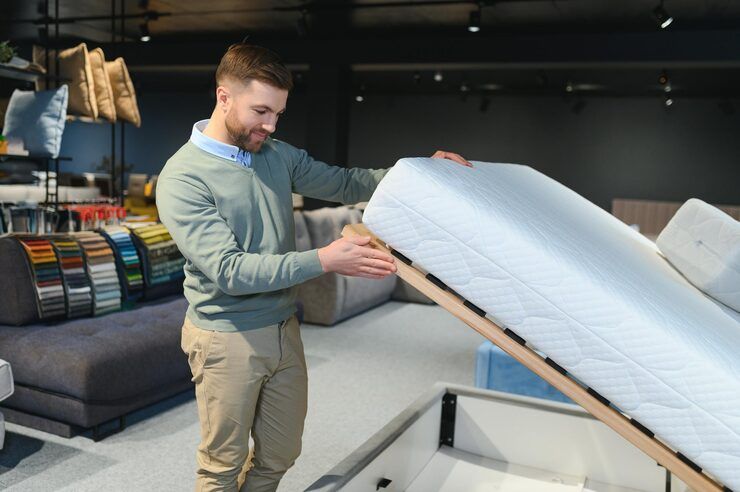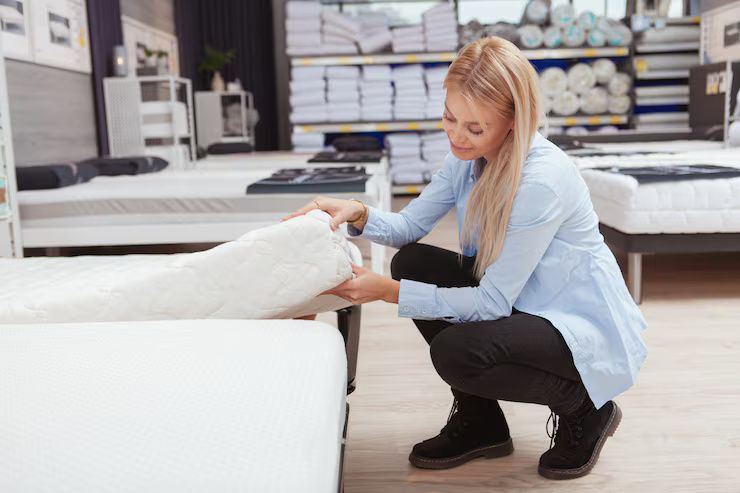Convertible beds are designed to serve more than one function, making them a popular choice in modern homes where space optimization is essential. A convertible bed can transform into a sofa, storage unit, or bunk bed, depending on its design. These beds exist to address the growing demand for multifunctional furniture, especially in apartments, shared living spaces, and urban homes where maximizing every square foot matters.
Furniture makers have developed convertible beds as a response to the global trend of compact living. With rising real estate costs and smaller living spaces in many cities, multifunctional furniture offers a balance of comfort, convenience, and practicality.

Importance – Why convertible beds matter today
Convertible beds matter because they solve common problems faced by homeowners and renters, including:
-
Space-saving benefits: Perfect for studio apartments, guest rooms, or small bedrooms.
-
Cost efficiency: One piece of furniture serves multiple purposes, reducing the need for buying separate items.
-
Adaptability: Suitable for families, students, and professionals who move frequently.
-
Comfort with flexibility: Provides sleeping arrangements without compromising living space.
Convertible beds are not just about saving room; they also encourage thoughtful interior planning. For example, a sofa bed can create a multipurpose living room that functions as both a lounge and guest bedroom.
Recent updates and trends
Over the past year, the market for convertible beds has seen several updates and shifts:
-
Sustainable materials: In 2024, more manufacturers are using eco-friendly materials such as bamboo, reclaimed wood, and organic fabrics in convertible furniture.
-
Smart designs: Some brands have introduced convertible beds with built-in USB ports, wireless charging, and modular add-ons.
-
Increased demand: Reports from 2023–2024 show growing popularity in urban regions like New York, London, and Mumbai, where compact housing has driven the multifunctional furniture trend.
-
Customization options: Convertible beds are now available with adjustable designs, allowing buyers to choose layouts, fabric types, and finishes that match their style.
The focus is shifting toward functionality that does not compromise aesthetics, making convertible beds both stylish and practical.
Laws or policies affecting convertible beds
Government regulations and policies often play a role in the safety and quality of convertible furniture. Key considerations include:
-
Safety standards: In the U.S., the Consumer Product Safety Commission (CPSC) enforces safety requirements for bunk beds and convertible designs to prevent risks such as entrapment or collapse.
-
Fire safety rules: Upholstered convertible beds must meet flammability standards in many countries. For example, the U.K. follows the Furniture and Furnishings (Fire Safety) Regulations.
-
Environmental policies: Some regions encourage sustainable furniture production. In the EU, furniture makers must adhere to Eco-design directives that promote recyclable and safe materials.
-
Import/export regulations: Buyers importing furniture online may need to check compliance with customs rules and product certifications in their country.
Understanding these laws ensures that buyers choose furniture that is both safe and durable.
Tools and resources to help in choosing convertible beds
Several tools and resources can make the process of selecting a convertible bed easier:
-
Online room planners – Apps like Roomstyler or Planner 5D help visualize how a convertible bed fits into your space.
-
Furniture comparison websites – Platforms like Wayfair, IKEA, or Urban Ladder provide filters for dimensions, features, and material.
-
Measurement apps – Tools such as Magicplan or AR-based room measurement apps help ensure the bed will fit properly.
-
Interior design blogs and forums – Websites like Houzz and Apartment Therapy offer user reviews and practical advice.
-
Ergonomic guides – Resources from organizations such as the National Sleep Foundation provide tips on mattress comfort and durability.
Using these resources ensures that the selection is based on both practicality and comfort.
Practical considerations table
| Factor | Why it matters | Example questions to ask |
|---|---|---|
| Size & Dimensions | Ensures the bed fits the room | Will it open fully without blocking doors? |
| Material Quality | Impacts durability and maintenance | Is it solid wood, metal, or engineered wood? |
| Ease of Conversion | Determines convenience of daily use | Can one person easily fold or extend it? |
| Storage Options | Adds extra functionality | Does it include drawers or hidden compartments? |
| Budget Range | Helps set expectations for features | Is this an affordable or premium choice? |
FAQs
Q1. What types of convertible beds are available?
Convertible beds include sofa beds, daybeds, Murphy beds, bunk beds, and loft beds. Each type serves different space-saving needs.
Q2. Are convertible beds comfortable for daily use?
Yes, many modern designs use high-quality mattresses and ergonomic mechanisms, making them suitable for daily sleeping. However, it’s important to check reviews and materials.
Q3. How long does a convertible bed typically last?
With proper care, a convertible bed can last 7–12 years, depending on the material quality and frequency of use.
Q4. Do convertible beds require special maintenance?
Most require minimal maintenance, but periodic tightening of screws, cleaning upholstery, and checking hinges ensures longevity.
Q5. Are convertible beds safe for children?
Yes, as long as they meet safety standards. For bunk or loft styles, parents should ensure guardrails and ladder stability are in place.
Final thoughts
Convertible beds combine practicality, comfort, and innovation, making them a reliable solution for modern living spaces. They are particularly valuable for small apartments, multipurpose rooms, or families who want flexible furniture solutions.
By considering factors such as size, quality, safety standards, and ease of use, buyers can make an informed decision. With new trends in sustainable design and smart features, convertible beds continue to evolve into essential furniture pieces for compact and stylish homes.
